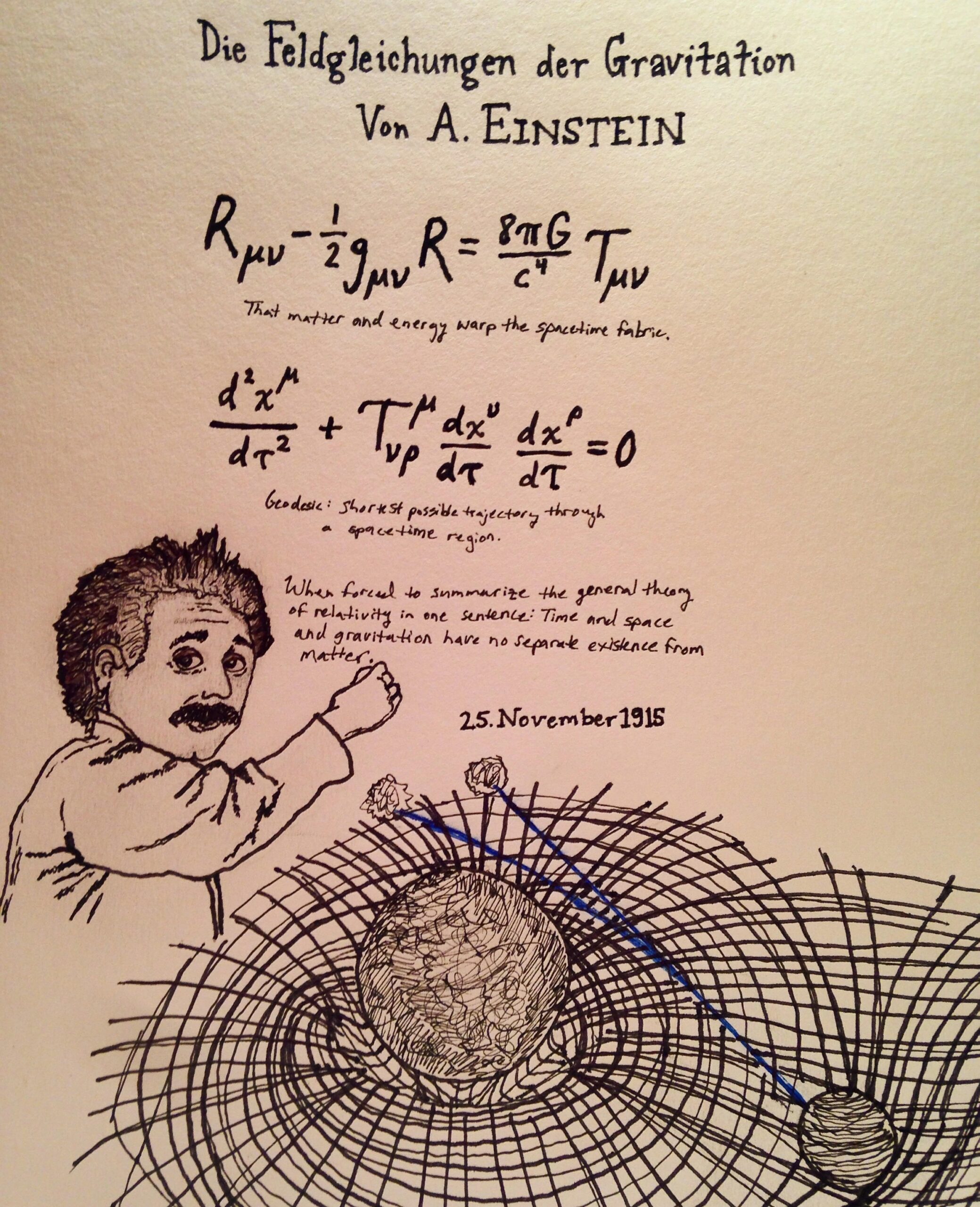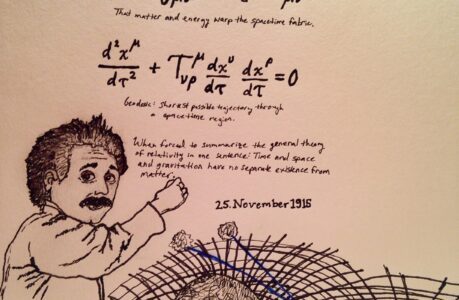Unlocking the Secrets of the Universe: General Relativity Unveiled
General Relativity for Beginners
General relativity, one of the most profound and groundbreaking theories in the history of physics, has captivated the minds of scientists and amateur astronomers alike. In this article, we will delve into the fascinating world of general relativity and explore its implications for amateur astronomy. Whether you are a seasoned stargazer or just starting your journey into the cosmos, this article will provide you with insights that will enhance your appreciation of the universe.
What is General Relativity?
At its core, general relativity is a theory of gravitation, developed by Albert Einstein in the early 20th century. It replaced Isaac Newton’s classical theory of gravity, offering a more accurate description of how massive objects interact with each other in the universe.
The Equivalence Principle
One of the foundational principles of general relativity is the Equivalence Principle. This principle asserts that the effects of gravity are indistinguishable from the effects of acceleration. In other words, if you were inside a sealed, windowless room with no external cues, you wouldn’t be able to tell whether you were sitting still on Earth or accelerating through space.
This insight has profound implications for our understanding of gravity and the fabric of spacetime itself. It suggests that gravity is not just a force but rather a curvature of spacetime caused by massive objects.
Warping of Spacetime
General relativity introduces the concept of spacetime as a unified entity where space and time are intertwined. Massive objects, such as stars and planets, warp the fabric of spacetime around them. Imagine placing a heavy ball on a rubber sheet; it causes the sheet to curve. Similarly, massive objects create curves in spacetime, which we perceive as gravitational attraction.
Observing General Relativity in Action
Now that we have a basic understanding of general relativity, let’s explore how amateur astronomers can observe its effects in the night sky.
Gravitational Lensing
One of the most visually striking effects of general relativity is gravitational lensing. This phenomenon occurs when a massive object, like a galaxy or a black hole, bends and distorts the light from objects behind it. It creates a magnifying glass-like effect, allowing astronomers to see distant objects that would otherwise be too faint to detect.
Amateur astronomers equipped with telescopes can observe gravitational lensing during celestial events, such as solar and lunar eclipses. These events provide a unique opportunity to witness the bending of light around celestial bodies, confirming Einstein’s predictions.
Gravitational Waves
In 2015, scientists made a groundbreaking discovery by directly detecting gravitational waves, ripples in spacetime caused by the motion of massive objects. This discovery confirmed another aspect of general relativity and opened up a new era of astronomy.
Amateur astronomers can’t directly detect gravitational waves, but they can stay informed about the latest discoveries and developments in this field. Gravitational wave detectors like LIGO and Virgo continue to make exciting observations, revealing the universe’s hidden secrets.
General Relativity and Celestial Mechanics
Precision Orbit Predictions
General relativity also plays a crucial role in the precise prediction of celestial object orbits. While Newtonian gravity provides accurate predictions for most purposes, general relativity offers additional precision, especially in extreme conditions.
Astronomers and amateur star gazers can benefit from these precise predictions when planning observations and tracking celestial events. Knowing the exact positions of planets, moons, and other objects in the sky enhances the amateur astronomer’s experience.
Precession of Mercury’s Orbit
One of the earliest tests of general relativity involved the precession of Mercury’s orbit. Classical physics predicted a certain rate of precession, but observations deviated from these predictions. Einstein’s theory correctly accounted for the observed precession, providing strong experimental evidence for general relativity.
Amateur astronomers with advanced equipment can also observe the precession of planets’ orbits over time, although the effects are subtle and require careful measurement and analysis.
Exploring the Cosmos with General Relativity
Black Holes: Gravity’s Extremes
Black holes, often described as the darkest and most mysterious objects in the universe, are a direct consequence of general relativity. These enigmatic objects are formed when massive stars collapse under their gravity, creating an infinitely dense point called a singularity
While amateur astronomers can’t directly observe black holes, they can study their effects on nearby stars and matter. By observing the orbits of stars around invisible companions, astronomers can infer the presence of black holes in binary star systems.
Cosmic Expansion and Dark Energy
General relativity also played a pivotal role in our understanding of cosmic expansion and the mysterious force known as dark energy. Einstein initially introduced the cosmological constant into his equations to maintain a static universe, a concept later abandoned when the expansion of the universe was discovered.
Today, amateur astronomers can appreciate the profound implications of an expanding universe. They can observe distant galaxies receding from us, providing evidence of this cosmic expansion. The concept of dark energy, responsible for this acceleration, remains an active area of research and discussion in the amateur astronomy community.
A Universe of Possibilities
General relativity has transformed our understanding of the cosmos, from the behavior of light to the nature of gravity itself. As an amateur astronomer, you have the opportunity to explore and appreciate the universe in ways that were unimaginable just a century ago.
Joining Amateur Astronomy Clubs
One of the best ways to dive into amateur astronomy and explore the wonders of general relativity is by joining local astronomy clubs. These clubs often host star parties, workshops, and lectures that provide invaluable opportunities for learning and observation.
Stargazing Equipment
To make the most of your amateur astronomy journey, invest in quality stargazing equipment. Telescopes, binoculars, and star charts are essential tools that will enhance your ability to observe the cosmos.
General Relativity
In conclusion, general relativity is a remarkable scientific theory that has reshaped our understanding of the universe. Its insights into the nature of gravity, spacetime, and the behavior of massive objects have profound implications for amateur astronomers. By exploring phenomena like gravitational lensing, gravitational waves, and the precession of celestial objects, amateur astronomers can actively engage with the principles of general relativity and enrich their cosmic experience.
The universe is a vast and dynamic place, and with each passing day, we uncover new mysteries and revelations. As an amateur astronomer, you have the privilege of being part of this ongoing exploration. So, grab your telescope, head outside, and marvel at

